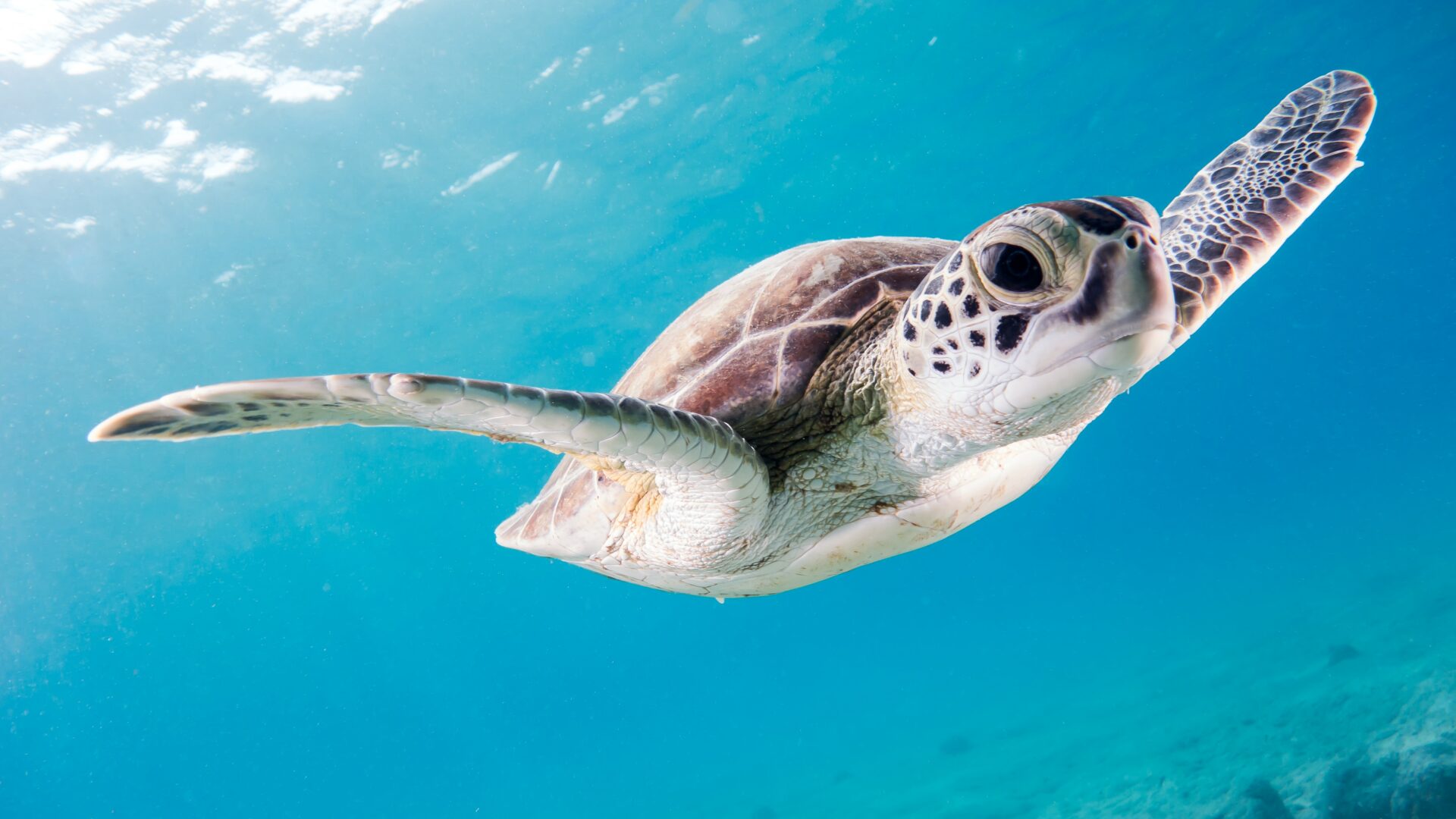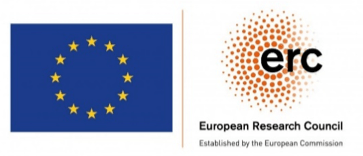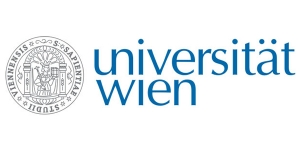Diving into Marine Issues of the Global Biodiversity Framework: How global will the new biodiversity framework be?
Member States to the United Nations are now meeting in Montreal, Canada to adopt the Post-2020 Global Biodiversity Framework (GBF)[1]. An Open-ended Working Group was tasked to prepare the draft text prior to the upcoming Conference of the Parties (COP). As outstanding issues remained unresolved[2], time for discussions was extended further. The MARIPOLDATA team closely followed the preparations for the Post-2020 Biodiversity Framework since October 2021 with the first virtual session of COP15, followed by on-site participation in the Working Group Meetings in Geneva in March 2022, Nairobi in June 2022 and are represented in Montreal, Canada for the 5th meeting, as well as COP15, in December 2022. This blog provides an overview of marine-related issues in the current draft of the new GBF that are also relevant to the upcoming negotiations for a legally-binding instrument for the conservation and sustainable use of marine diversity of areas beyond national jurisdiction (BBNJ)[3].

Photo by Kris-Mikael Krister on Unsplash
A Framework for the World to live in Harmony with Nature by 2050
The global biodiversity crisis is not new to policy-makers around the globe – the recognition that biodiversity loss is happening at an accelerating rate has led to many efforts to reverse biodiversity loss on national, regional and international levels. However, with the realisation that business-as-usual cannot lead to transformative change to reverse biodiversity loss, world leaders are now coming together to agree on action-oriented targets to “immediately” respond to the biodiversity crisis and to “put biodiversity on the path to recovery” in the next 10 years[4]. The first draft of the GBF includes a mission for 2030, a vision for 2050 and milestones to assess along the way to guarantee successful implementation of the framework. Moreover, the framework sets out 22 specific targets to be focused on, covering the themes a) reducing threats to biodiversity, b) meeting people’s needs through sustainable use and benefit-sharing, c) tools and solutions for implementation and mainstreaming.
Representatives from governments, non-governmental organisations (NGOs), academia and research last gathered in Nairobi, Kenya to draft the Post-2020 GBF to achieve living in harmony with nature by 2050. After the extended 5th session shortly before the upcoming conference, the draft will then be finalised and open for adoption at COP15 in Montreal, Canada under the presidency of China (7 to 19 December 2022).
Joining Ocean and Biodiversity efforts for a new Global Framework
There is no doubt we live on a blue planet with more than two-thirds covered by ocean. The ocean constitutes over 90 % of the habitable space on Earth, containing around 250,000 known species – not to speak of the significant biodiversity that is yet unknown to science[5]. The most recent 5th Global Biodiversity Outlook[6] and the Second Global Ocean Assessment[7] emphasise the continuous and increasing marine biodiversity loss, driven by human activities. Stressors include (over)fishing, exploitation of other marine resources, such as minerals, intentional and unintentional marine pollution, including plastic, chemicals and toxicants from shipping, tourism and the military, as well as noise pollution. Moreover, there are risks of further degradation of the marine environment and increased biodiversity loss by future (not yet authorised) activities; the most prevalent being deep sea-bed mining (Miller et al., 2021; Amon et al., 2022). The above-mentioned activities are stressors on biodiversity with uncertain consequences that might extend beyond our predictions and imagination. For the well-being of the planet and people, it is thus evident to put efforts into protecting marine biodiversity and the new GBF is a crucial step forward in reversing marine biodiversity loss.
The ocean is interconnected, but is often not treated this way in international law: The United Nations Convention on the Law of the Sea (UNCLOS) divides the ocean into different maritime zones for governance and jurisdiction (Tessnow-von Wysocki & Vadrot, 2022). 64% of the ocean space (which is 95% of its volume!) is considered to be “international waters” or “the high seas”, which are the areas that do not fall under national jurisdiction of any state. The international effort to negotiate a new agreement on marine biodiversity conservation and sustainable use (beyond national jurisdiction) is underway and many links to the GBF can be observed. Relevance to marine biodiversity can be found in several parts of the framework by aiming to protect and sustainably use biodiversity. In this blog, we focus on the GBF targets in each of the three themes that are most relevant to the upcoming negotiations for a legally-binding agreement for the conservation and sustainable use of marine biodiversity beyond national jurisdiction.
A) Reducing threats to marine biodiversity
During the Nairobi meetings, the Blue Leaders[8], a group of states calling for 30% of protected ocean areas made a joint intervention, reiterating the importance of the world’s ocean and pointing to current stressors including climate change, depleted fish stocks, unsustainable and illegal, unreported and unregulated (IUU) fishing activities. The group agrees on the importance of protecting the ocean by 2030 “meaningfully” – that is to not simply establish “paper parks” (= protected areas that exist on paper but have no actual impact) but to effectively prevent destructive uses through implementation. Goal A pursues to reduce threats to biodiversity, particularly Targets 1-3 make explicit mention to marine issues and spatial planning but included much contestation among governments in past meetings: Foreseeing divergence on key issues, an informal “friends of the co-leads” group was called together to discuss terminology across targets 1-3. Discussions included multiple views of states as regards the scope of the GBF: Views parted in the terminology of “land and sea” versus “land and ocean” areas. Moreover, a number of states also rejected the terminology “areas”, preferring reference to “ecosystems”. Divergence also existed on the definition of ecosystems, namely the difference between “all” ecosystems versus a specific listing of ecosystem (e.g. “terrestrial, inland water, freshwater, marine, and coastal ecosystems”).
Despite extensive informal discussions in the informal setting, as well as the formal contact group meetings and a long night session until the early morning hours, disagreement remained until the end of the conference on such terminology. While the majority of negotiators supported the inclusion of the entire ocean, some parties would like to limit the target to waters under national jurisdiction, and thereby exclude the high seas. Discussions also included divergence on references to human rights and Indigenous Peoples and Local Communities (IPLCs) and related conventions. Placeholders were set on these contested issues, which means that the negotiation of such issues was postponed to the ongoing meeting in Canada.
These targets are particularly interesting for the upcoming BBNJ negotiations regarding area-based management tools, including marine protected areas. The GBF could in this way be the guidance for immediate action on area-based management tools for the conservation and sustainable use of marine biodiversity in areas beyond national jurisdiction, which could be implemented through the new BBNJ instrument. Moreover, the overall section of reducing threats to biodiversity also indirectly speak to the regulation of the conduct of environmental impact assessments (EIAs), for which the BBNJ instrument also has a mandate for.
B) Meeting people’s needs through sustainable use and benefit-sharing of marine genetic resources
Also particularly interesting to both negotiators in the CBD and BBNJ discussions is Target 13, as it regards the aim to facilitate access to genetic resources and to ensure fair and equitable sharing of benefits arising from the use of genetic resources. Discussions in the CBD and BBNJ are very similar in this regard, when it comes to issues on, not only access to and sharing of benefits of the physical sample of the genetic resource, but also other data related to the genetic resource, such as digital sequence information (DSI). It will be important to coordinate negotiations to harmonise, rather than duplicate, efforts in both fora.
C) Tools and solutions for implementation and mainstreaming
Target 20 of the current draft seeks to guarantee that relevant knowledge guides decision-making for the effective management of biodiversity. On a similar vein, BBNJ envisages a Scientific and Technical Body to provide a scientific base for implementation of the agreement that will need to correspond to other forms of knowledge, apart from scientific research. One pillar of the BBNJ instrument is capacity building and transfer of marine technology to guarantee advancements in marine scientific research and the inclusion of knowledge of Indigenous Peoples and Local Communities to support the effective implementation of the agreement. Coordination in this regard would ensure that advancing ocean science and embracing different knowledge systems under the BBNJ instrument contributes to holistic biodiversity governance envisaged by the GBF.
All eyes on the GBF – and on BBNJ: What happens next?
Negotiators meet in December 2022 to adopt the new Global Biodiversity Framework and the negotiations for a legally-binding agreement for the conservation and sustainable use of marine biodiversity of areas beyond national jurisdiction (BBNJ) will conclude early next year.
Links between BBNJ and the GBF are obvious:
- The BBNJ negotiations include the topic of access to and fair and equitable sharing of benefits arising from marine genetic resources in areas beyond national jurisdiction and questions on a future Access and Benefit Sharing Mechanism (ABS). Questions on DSI of (marine) genetic resources are part of target 13 of the GBF and discussions need to be coordinated across the different fora.
- The BBNJ instrument will have the mandate to establish Area-based management tools (ABMTs), including marine protected areas (MPAs) in areas beyond national jurisdiction, which directly link to the spatial planning targets 1-3 of the GBF. It is crucial that the GBF refers to the entire ocean – as opposed to marine areas under national jurisdiction – in order to be a global framework.
- The BBNJ agreement will regulate the conduct of environmental impact assessments (EIAs) in areas beyond national jurisdiction, which will respond to efforts to conserve and sustainably use of global biodiversity. Target 15 of the GBF refers to the environmental impact assessments to be conducted by all businesses to determine their footprint and dependencies on biodiversity.
- The final pillar of the BBNJ agreement regards capacity building and the transfer of marine technology (CBTMT), which relates to target 20 of the GBF. A future Scientific and Technical Body for BBNJ will need to ensure relevant knowledge is available for decision-making and management of biodiversity.
It is crucial that there is coordination between the negotiations for the BBNJ treaty and the GBF when it comes to questions of terminology, scope and state obligations in order to effectively conserve and sustainably use marine biodiversity. While areas beyond national jurisdiction are supposed to fall into the BBNJ instrument’s mandate, future implementation would still benefit from the guidance of the global biodiversity framework, which – by its title – cannot exclude certain marine areas.
The meeting of the Open-Ended Working Group in Nairobi left many questions unanswered and after additional discussions in an Informal Group in September[9], much pressure rests on negotiators of the final 5th Open-Ended Working Group to streamline the text as best as possible before the start of the COP. Not an easy task with around 900 brackets remaining (text that has not been agreed upon)[10]: The draft text is not clear in many of the targets and time is running, but more importantly, like Executive Secretary of the Convention on Biological Diversity, Elizabeth Mrema, said: “Biodiversity cannot wait.” There is the hope that with only a few days left to negotiate, states will show more flexibility in their positions and approach one another in the spirit of compromise. While the overall aim is to develop a framework for the world on how to protect, sustainably use and share benefits deriving from biodiversity in the next decades to come, it is yet to be seen, how holistic and global the framework will be drafted for final adoption at the upcoming COP15.
Negotiators from both fora need to coordinate efforts so that the global road map corresponds to the realities on the ground. Efforts to setting global targets and creating institutions to implement them should go hand in hand. The fact that these processes are simultaneously happening can be an advantage in ensuring clearly formulated targets and the development of institutions that can lead to successful implementation and take immediate, urgent action, aligned under one common purpose: our vision for 2050. The Convention on Biological Diversity and the Convention on the Law of the Sea might be two different conventions, with distinct mandates – but if you think about it there is much more that unites them: The same governments are negotiating in these fora, taking decisions about the same planet – having the same objective: conserving and sustainably using biodiversity.
A big thank you to the High Seas Alliance and Deep Ocean Stewardship Initiative who funded my conference participation to attend the 4th Open-Ended Working Group Meeting in Nairobi and the MARIPOLDATA team who conducted digital ethnography from Vienna.
[1] https://www.cbd.int/conferences/post2020
[2] https://www.maripoldata.eu/an-ocean-of-possibilities-marine-biodiversity-in-the-post-2020-global-biodiversity-framework/
[4] First draft of the GBF: https://www.cbd.int/doc/c/abb5/591f/2e46096d3f0330b08ce87a45/wg2020-03-03-en.pdf
[5]https://www.un.org/en/chronicle/article/marine-biodiversity-and-ecosystems-underpin-healthy-planet-and-social-well-being
[6] P.156. Secretariat of the Convention on Biological Diversity (2020) Global Biodiversity Outlook 5. Montreal: https://www.cbd.int/gbo/gbo5/publication/gbo-5-en.pdf
[7] https://www.un.org/regularprocess/sites/www.un.org.regularprocess/files/2011859-e-woa-ii-vol-ii.pdf
[8] https://www.theblueleaders.org/
[9] https://www.cbd.int/doc/c/dfeb/e742/b936c09eae9dd558c1310b5b/wg2020-05-02-en.pdf
[10] Daily CBD Press Briefing: https://www.youtube.com/watch?app=desktop&v=9IFs-vzAC8c&feature=youtu.be
References
Amon, D. J., Gollner, S., Morato, T., Smith, C. R., Chen, C., Christiansen, S., . . . Pickens, C. (2022). Assessment of scientific gaps related to the effective environmental management of deep-seabed mining. Marine Policy, 138, 105006. doi:https://doi.org/10.1016/j.marpol.2022.105006
Miller, K. A., Brigden, K., Santillo, D., Currie, D., Johnston, P., & Thompson, K. F. (2021). Challenging the Need for Deep Seabed Mining From the Perspective of Metal Demand, Biodiversity, Ecosystems Services, and Benefit Sharing. Frontiers in Marine Science, 8. doi: https://doi.org/10.3389/fmars.2021.706161
Tessnow-von Wysocki., I., & Vadrot, A., B. M. . (2022). Governing a divided ocean: The transformative power of ecological connectivity in the BBNJ negotiations. Politics and governance, 10, 28. doi:https://doi.org/10.17645/pag.v10i3.5428
Tessnow-von Wysocki, I., & Vadrot, A. B. M. (2020). The Voice of Science on Marine Biodiversity Negotiations: A Systematic Literature Review. Frontiers in Marine Science, 7. doi: https://doi.org/10.3389/fmars.2020.614282


